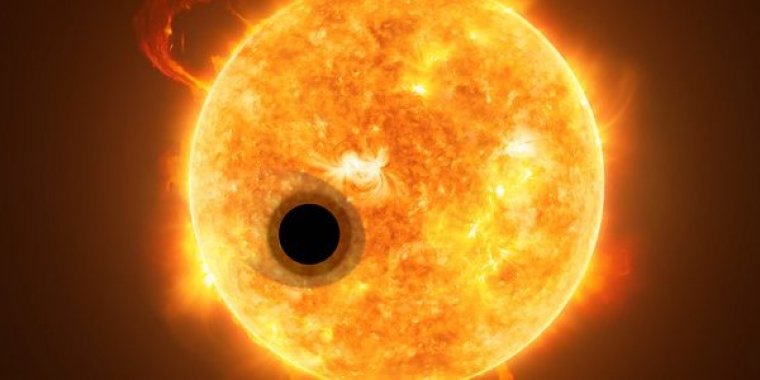| News / Space News |
Hubble detects helium in the atmosphere of an exoplanet for the first time
The international team of astronomers, led by Jessica Spake, a PhD student at the University of Exeter in the UK, used Hubble’s Wide Field Camera 3 to discover helium in the atmosphere of the exoplanet WASP-107b This is the first detection of its kind.

Hubble detects helium in the atmosphere of an exoplanet for the first time. Image credit: ESA/Hubble (CC BY 4.0)
Spake explains the importance of the discovery: “Helium is the second-most common element in the Universe after hydrogen. It is also one of the main constituents of the planets Jupiter and Saturn in our Solar System. However, up until now helium had not been detected on exoplanets - despite searches for it.”
The team made the detection by analysing the infrared spectrum of the atmosphere of WASP-107b. Previous detections of extended exoplanet atmospheres have been made by studying the spectrum at ultraviolet and optical wavelengths; this detection therefore demonstrates that exoplanet atmospheres can also be studied at longer wavelengths.
WASP-107b is one of the lowest density planets known: While the planet is about the same size as Jupiter, it has only 12% of Jupiter’s mass. The exoplanet is about 200 light-years from Earth and takes less than six days to orbit its host star.
The amount of helium detected in the atmosphere of WASP-107b is so large that its upper atmosphere must extend tens of thousands of kilometres out into space. This also makes it the first time that an extended atmosphere has been discovered at infrared wavelengths.
Since its atmosphere is so extended, the planet is losing a significant amount of its atmospheric gases into space — between ~0.1-4% of its atmosphere’s total mass every billion years.
As far back as the year 2000, it was predicted that helium would be one of the most readily-detectable gases on giant exoplanets, but until now, searches were unsuccessful. (ESA/Hubble)
YOU MAY ALSO LIKE



